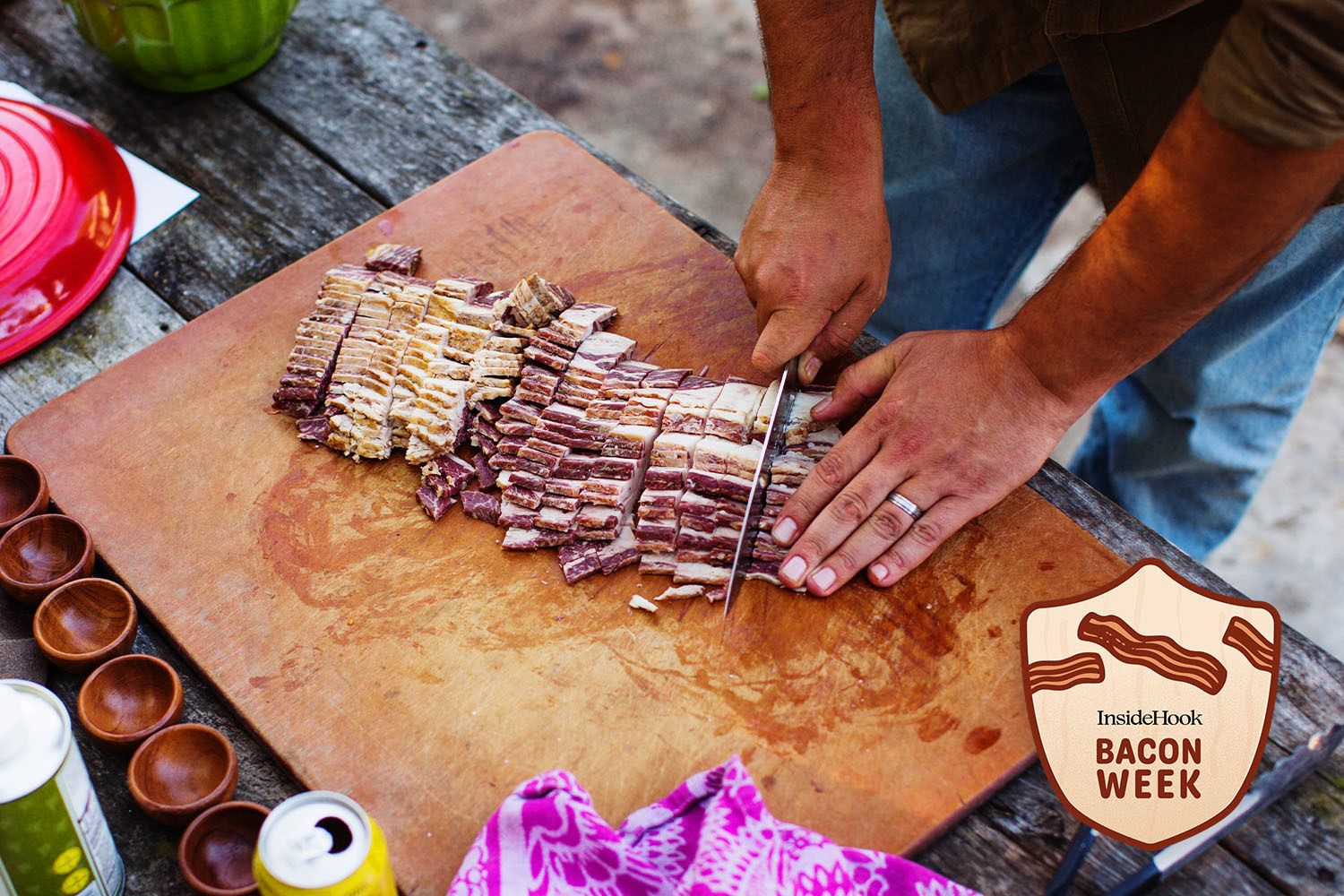International Bacon Day is an unofficial holiday that takes place on the first Saturday of September. But we think bacon deserves more — hence, InsideHook’s Bacon Week, a collection of stories old and new celebrating salt-cured pork (and in some cases, non-pork or even non-meat) in all its sizzling glory.
With a plethora of pork purveyors popping up online, it’s now easier than ever to bring home the bacon (hopefully for baking). However, for those interested in saving a little cheddar or experimenting with their own flavors, it turns out that homemade bacon — curing and smoking it at home — is not that hard, according to meat master James Peisker of Nashville-based Porter Road.
So, to keep things hot and heavy as Bacon Week cooks along, here’s a quick guide to making your own bacon using three pounds of pasture-raised pork belly, one pound of kosher salt, a half-pound of white sugar, an ounce of pink or curing salt and a bit of black pepper.
Step 1: Combine ingredients and rub all over the pork.
“DIY bacon is a lot easier to make than most people think. The easiest and most simple recipe for bacon is salt and pork. You take pork belly, rub it in salt and cook it,” Peisker says. “That is going to result in very flat-flavored bacon. But in the simplest terms, that’s what salt pork or bacon originally was. It was a way to preserve it. You salt it and extract as much moisture as possible to create an environment where other things don’t wanna live. Extracting moisture intensifies the flavor. You need to keep the same amount of salt, but you can experiment with different flavors with your sweetener. Even if you’re not a big sugar eater, sugar in bacon is important because it makes a more balanced product. It could be honey, brown sugar, sorghum or molasses, but all of those are going to add a different flavor profile.”
Step 2. Seal in a bag and cure for 7 days in the fridge.
“We take our dry cure and rub it in, but then we shake off any excess before sealing. Whatever stays on there is what is going to cure that pork. It’s a traditional method,” Peisker says. “Because the industry is all about cheapening what is delicious and good, most bacon nowadays is pork belly that’s been injected with a brine to add water and salt. They’re plumping it up and don’t have to wait the seven days. They’re selling you wet bacon filled with water that you’re gonna cook out. Traditional small-batch bacon is going to have a much drier feeling. If you’re curing at home, you can do it in a Ziploc bag or a vacuum-sealed bag. Through the process of osmosis, the salts go all the way through the belly and make sure that the cure penetrates everything. You definitely wanna make sure it’s refrigerated throughout the process.”
Step 3. Remove. Smoke. Cool.
“Before you start the smoking process, make sure that you scrape off any excess cure if there is any. We smoke our bacon with cherry wood due to its mild and sweet flavor, but it is up to you. This is where you can play around,” Peisker says. “We hot smoke ours for a few hours until it hits 165 degrees and then cool it down as fast as possible. If you’re doing it at home, the best way to cool it is to put it on a cookie sheet with a rack in a refrigerator that is as empty as possible. After you smoke it, that’s where that traditional bacon smell is going to come. It’ll make everything smell like bacon. You want to let it sit at least overnight. Within four hours, it should be below 40 degrees.”
Step 4. Slice…carefully.
“Once it has cooled down, obviously the easiest way to slice is with a deli slicer like you’d find at a butcher shop. Most of us don’t have those at home, so you’re gonna need a long, very sharp knife,” Peisker says. “The goal here is to make sure you have nice even strokes. The most important part is that your bacon is the same thickness all the way through. Ours is an eighth-of-an-inch thick. It’s much thicker than what you’ll find at most grocery stores. Because of the curing, the bacon is a fully cooked product but the fat has a very offputting texture. The reason we cook it again is to get it crunchy and crispy and delicious.”
Join America's Fastest Growing Spirits Newsletter THE SPILL. Unlock all the reviews, recipes and revelry — and get 15% off award-winning La Tierra de Acre Mezcal.
